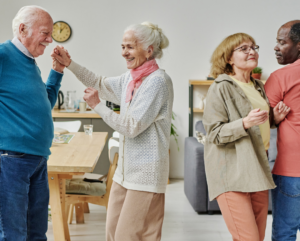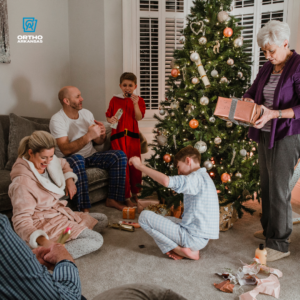Discover common runner’s foot injury causes, from overuse to improper shoes, and prevention tips for conditions like plantar fasciitis and sprains.
Running, despite its numerous health benefits, is not without orthopedic risks. Nearly half of recreational runners are injured each year. Many of these injuries, which are largely preventable, tend to affect primarily the feet, knees, and legs. However because foot injuries are among the most common musculoskeletal issues affecting people of all ages and activity levels, runners should take extra care of their feet.
One of the most common causes of foot injuries is overuse and repetitive strain. This type of injury is frequently diagnosed in runners and athletes who engage in activities that involve repetitive motions or high-impact movements. Excessive training, improper form or technique, and a lack of rest and recovery can all contribute to overuse injuries.
Running safety starts with the feet.
Understanding the common causes of foot injuries can help runners with both prevention and knowing what treatments are available if an injury occurs. Here are some foot problems that runners run a higher risk of, and their common causes:
Plantar Fasciitis
Plantar fasciitis is an inflammation of the tissues that connect your heel bone to your toes. It’s a type of tendonitis that can develop into chronic pain over time.
Cause: Excessive force or stress while running
Symptoms: Arch pain, heel pain, tightness in the foot, or a stabbing sensation on the bottom of the feet
Achilles Tendonitis
Achilles tendinitis is an overuse injury of the Achilles tendon, the band of tissue that runs down the back of your lower leg to the heel bone and connects your calf muscles to your foot. Middle-aged and older people who play active sports only on the weekends are at a high risk of this condition, as the structure weakens with age.
Cause: Overexertion, sudden increases in the intensity or duration of runs, change in footwear
Symptoms: A mild ache in the back of the leg or above the heel, tenderness or stiffness
Metatarsalgia
Metatarsalgia is an irritation of the tissues and muscles surrounding any of the five long bones in the foot. Patients who suffer from metatarsalgia need to wear proper shoes and get adequate rest after running.
Cause: Excessive contact with the ground while running, breaking down the bones and irritating the metatarsal bones, high arches
Symptoms: Stabbing pain in the arch of your foot or the ball of your foot, pain when flexing the bottom of your foot, numbness or tingling in the toes, and difficulty walking after a long run
Stress Fractures
A stress fracture is a small crack or severe bruising within the bone that causes pain and discomfort. There are different types and locations where a fraction can happen, but for runners, this typically occurs in the shins and feet.
Cause: Working too intensely before the body gets used to the new activity, overuse, and trauma such as falls
Symptoms: Sharp pain that worsens with activity but improves with rest.
Bunions
Bunions are bony bumps that form on the joint at the base of the big toe. They occur when bones in the front part of the foot move out of place, so the tip of the big toe gets pulled towards the smaller toes and forces the joint at the big toe’s base to stick out.
Cause: Wearing tight, narrow shoes; standing on your feet for long periods
Symptoms: Wider forefoot; red, sore skin and blisters under the bump.
Morton’s Neuroma
Morton’s neuroma is a condition that affects the ball of your foot, in between the metatarsal bones. This occurs when the tissue around a nerve that leads to one of the toes thickens from irritation or compression.
Cause: Foot or gait abnormality, like flat feet, high arches, or hammertoes; improperly fitted shoes or high heels.
Symptoms: Pain, a burning sensation in the ball of the foot or standing with a pebble in the shoe.
Sesamoiditis
There are two, small sesamoids located on the bottom of the foot near the big toe. Sesamoiditis occurs when the tendons attached to these sesamoids become inflamed.
Cause: Strain, overwork, or repeated trauma
Symptoms: Mild warmth, swelling, pain, and some redness.
Runner’s Tips for Faster Feet
Avoid Overuse and Repetitive Strain
When the body does not have sufficient time to repair and recover from the stress of physical activity, the risk of injury increases. It’s crucial to listen to your body and take breaks when needed, as well as incorporate proper warm-up and cool-down routines.
- Gradually increase the intensity and duration of your activities
- Maintain proper form and technique
- Wear appropriate footwear
- Incorporate cross-training
- Make rest days part of your routine
Avoid Ill-Fitting Footwear
Another common cause of foot injuries is wearing shoes that do not fit properly. Shoes that are too tight, loose, or lack proper support can lead to various foot problems, including blisters, corns, calluses, bunions, and even stress fractures.
- Wear shoes that are not too tight and provide adequate support
- Find the proper fit by having your feet measured by a professional
- Look for shoes with a wide toe box that allows your toes to move freely and a firm heel counter that provides stability.
Preventing Traumatic Injuries
Sprains are among the most common traumatic foot injuries and typically involve the stretching or tearing of ligaments that connect bones in the foot. Other acute injuries to the foot can include tendon ruptures, where the tendons that connect muscles to bones in the foot tear or detach, and contusions or bruises caused by direct trauma to the foot.
- Warm up and stretch before exercise
- Maintaining good balance and posture to reduce the risk of falls or twists
- Avoid overexertion by paying attention to pains
- Take breaks
Addressing foot injuries promptly is essential for preventing further damage and ensuring proper healing. Seeking medical attention, following recommended treatments, and making lifestyle adjustments can help alleviate discomfort and restore optimal foot health.














